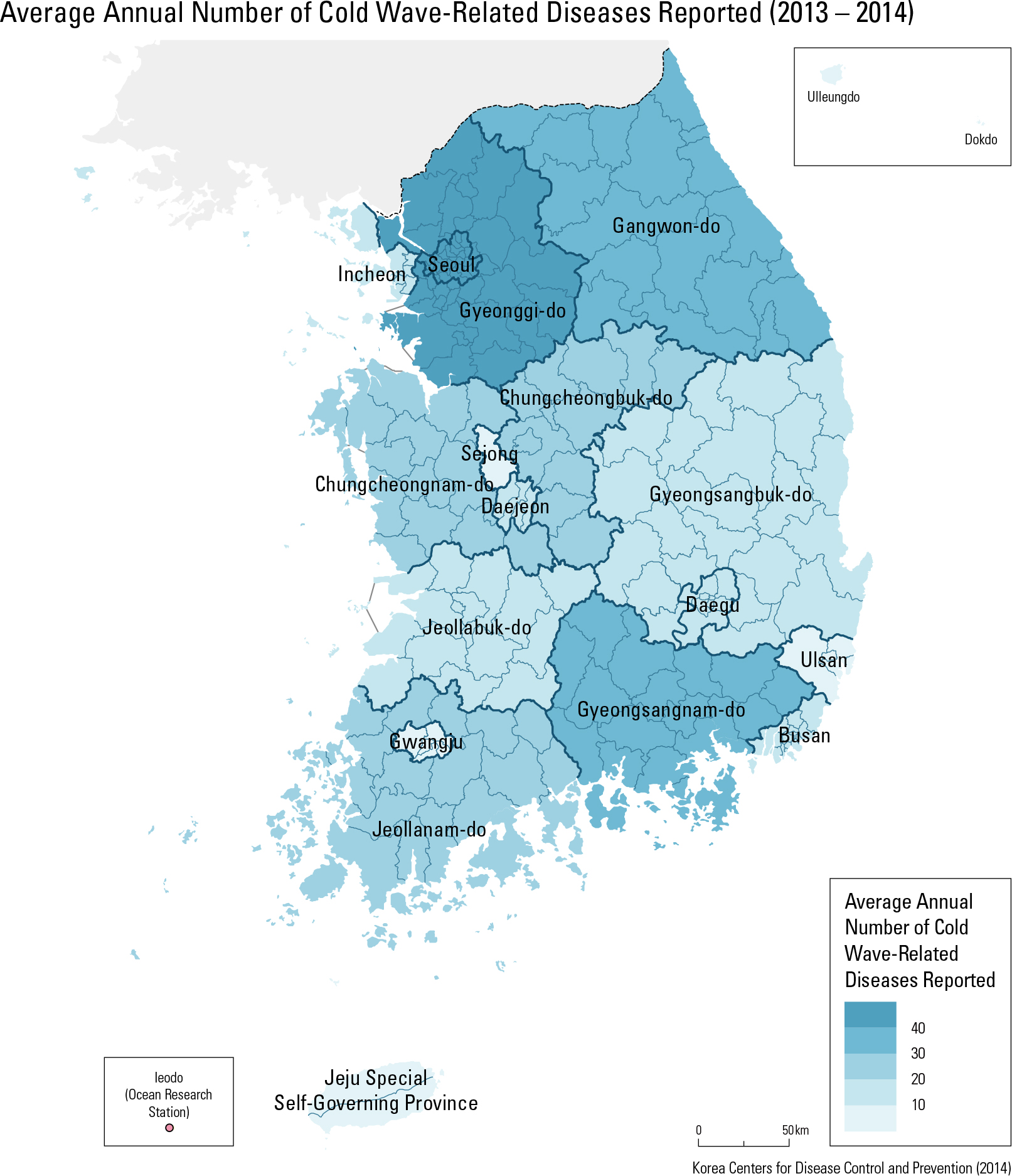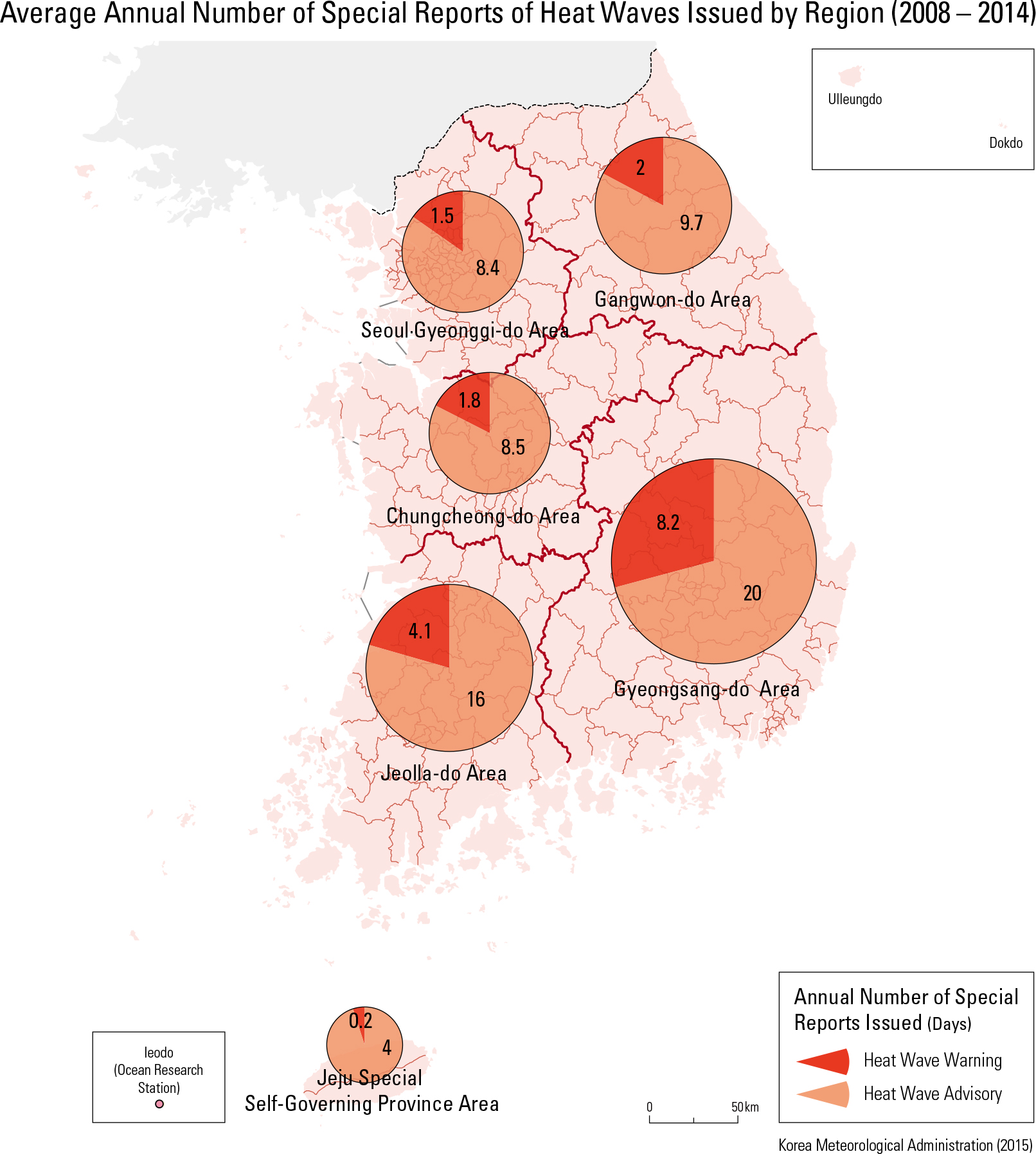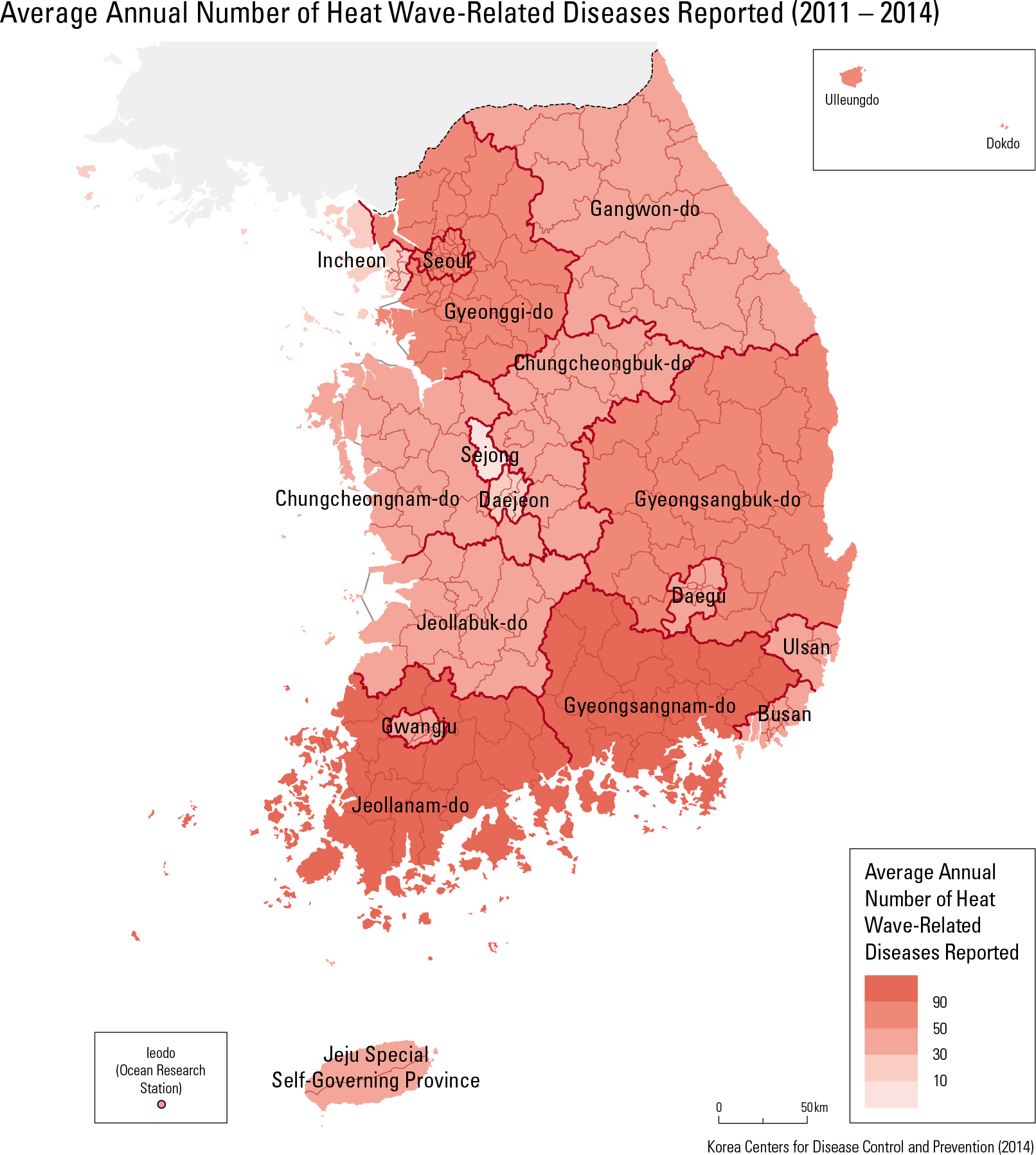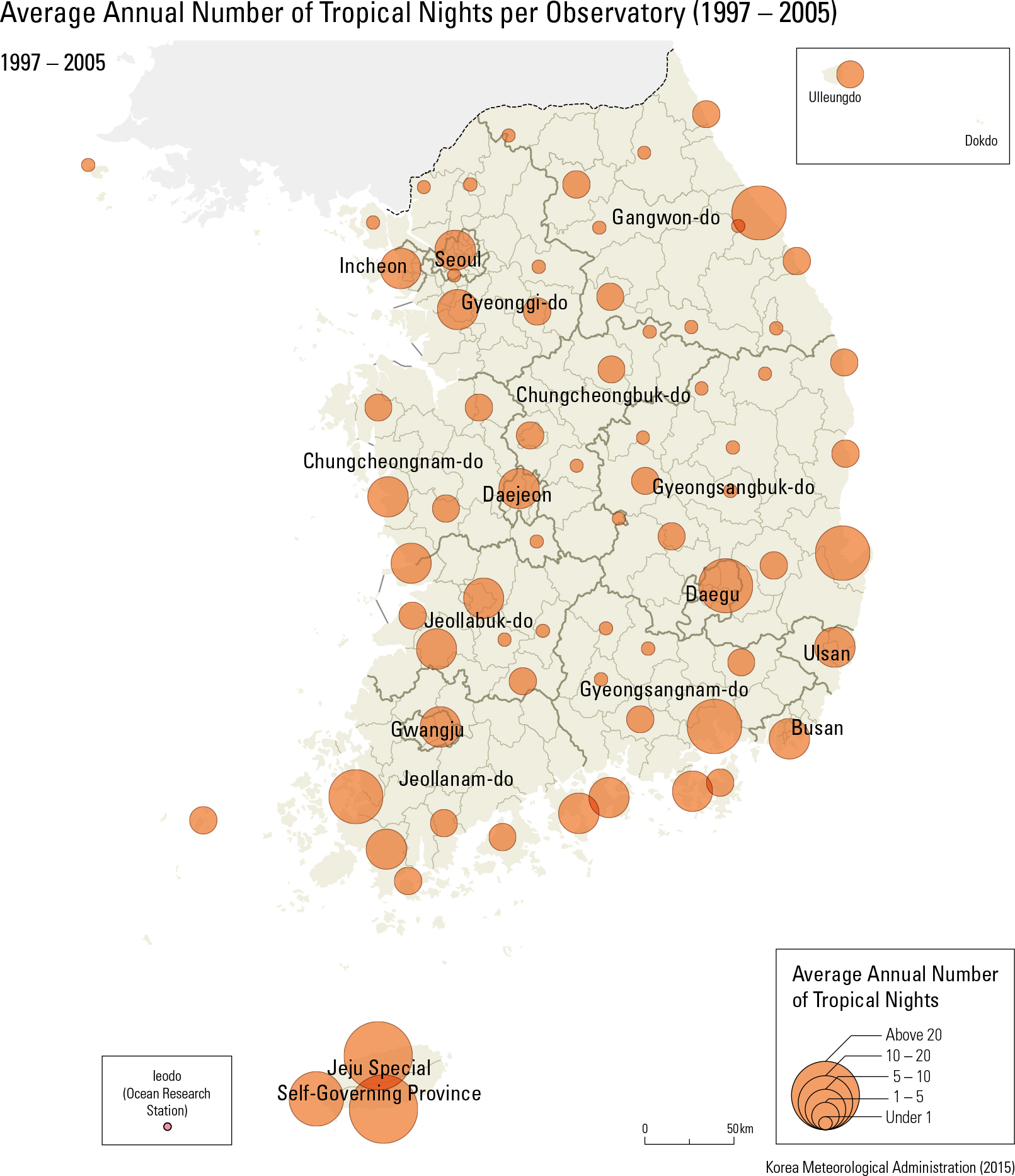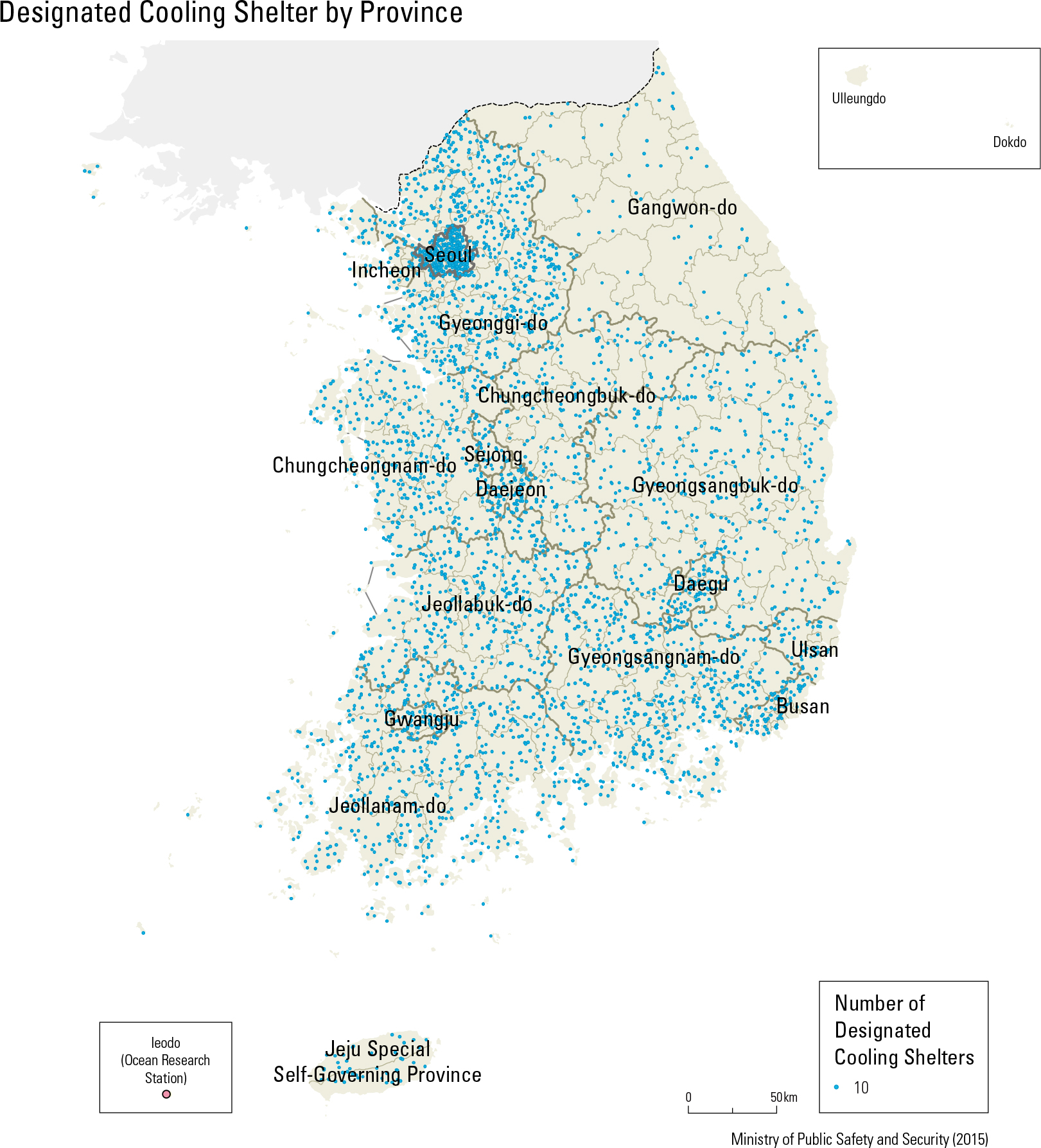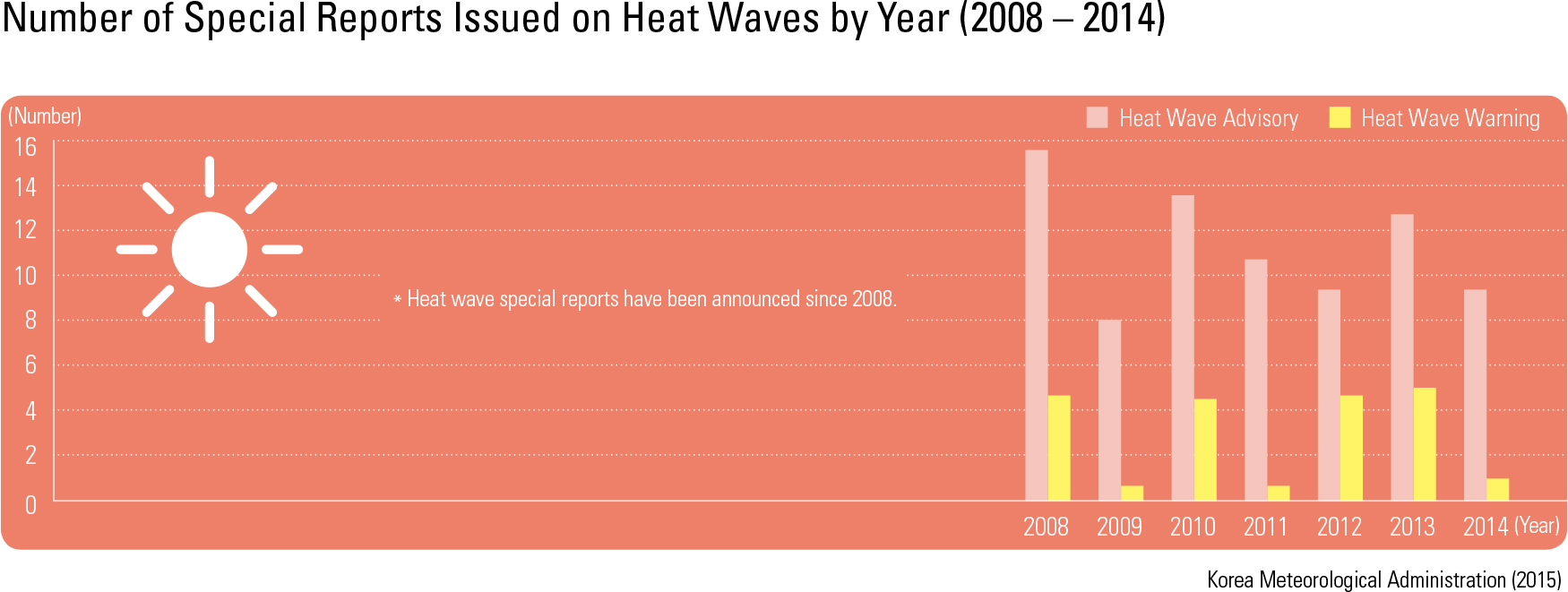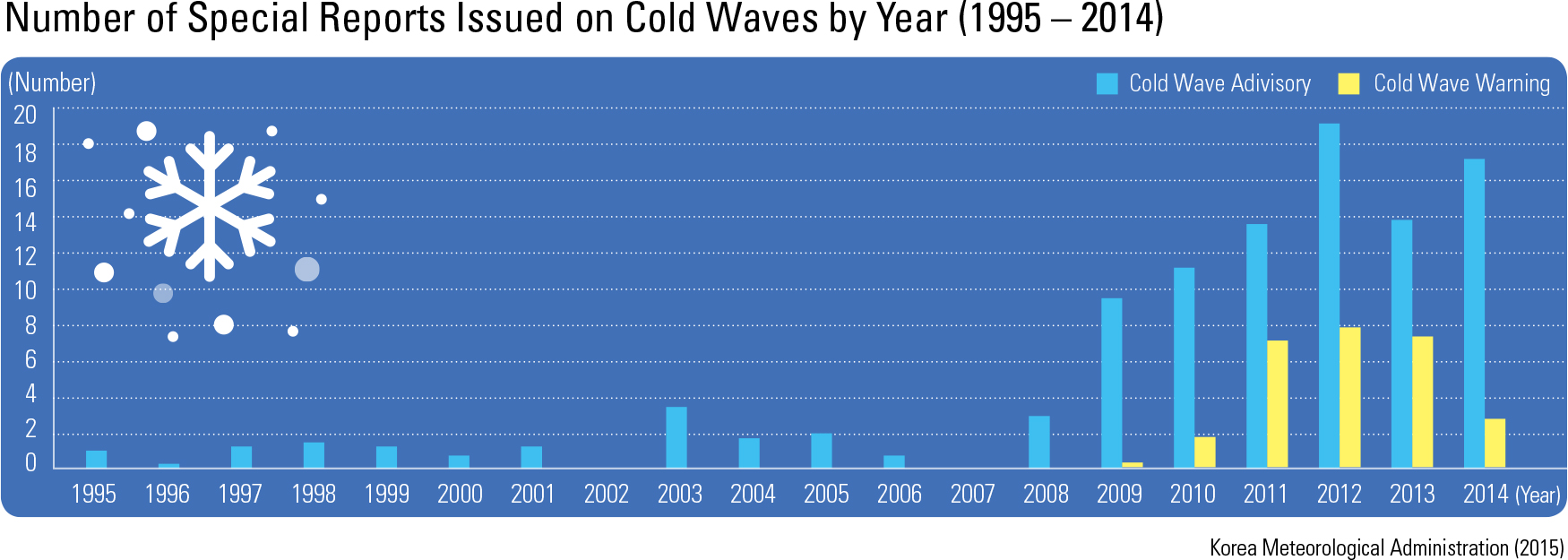English II
Cold waves are distinguished by a sudden drop in temperature over the Korean Peninsula when the cold, dry Siberian anticyclone expands into the southern China, and the northerly winds are strengthened. During the Northwest monsoon sea- son, it causes cold waves that reach Korea when a high pressure system resides in the east of the Korean Peninsula and low pressure resides in the west during the winter. Cold waves are often det- rimental to peoples' lives and health, and cause se- rious damage. Therefore, a cold wave special re- port is issued to warn the risk. Cold wave special reports are classi ed as advisories and warnings. A cold wave advisory is issued in 3 situations. First, it is when the minimum morning tempera- ture is expected to reach below 3 ̊C, decreases more than 10 ̊C compared to the previous day, and also when the temperature drops below 3 ̊C than the annual average. Second, it is when the morning temperature is -12 ̊C and lasts for more than 2 days. Third, it is when the temperature is so low that damage is expected. Meanwhile, cold wave warning is issued in 3 situations. First, it is when the minimum temperature in the morning is expected to reach lower than 3 ̊C, by 15 ̊C below than the previous day and it is expected to be 3 ̊C lower than the annual average. Second, it is when the minimum temperature is -15 ̊C in the morning and lasts for 2 days or more. Third, it is when the temperature is cold enough to yield critical dam- age over a wide area. A heat wave occurs when the temperature and heat index exceed a certain threshold over a peri- od of days. Heat wave special reports are classi- ed as advisories and warnings. A heat wave ad- visory is issued when the temperature is expected to reach a maximum of 33 ̊C and lasts for more than 2 days. A heat wave warning is issued when the temperature is expected to reach a maximum of 35 ̊C for more than 2 days.
page_2 |

